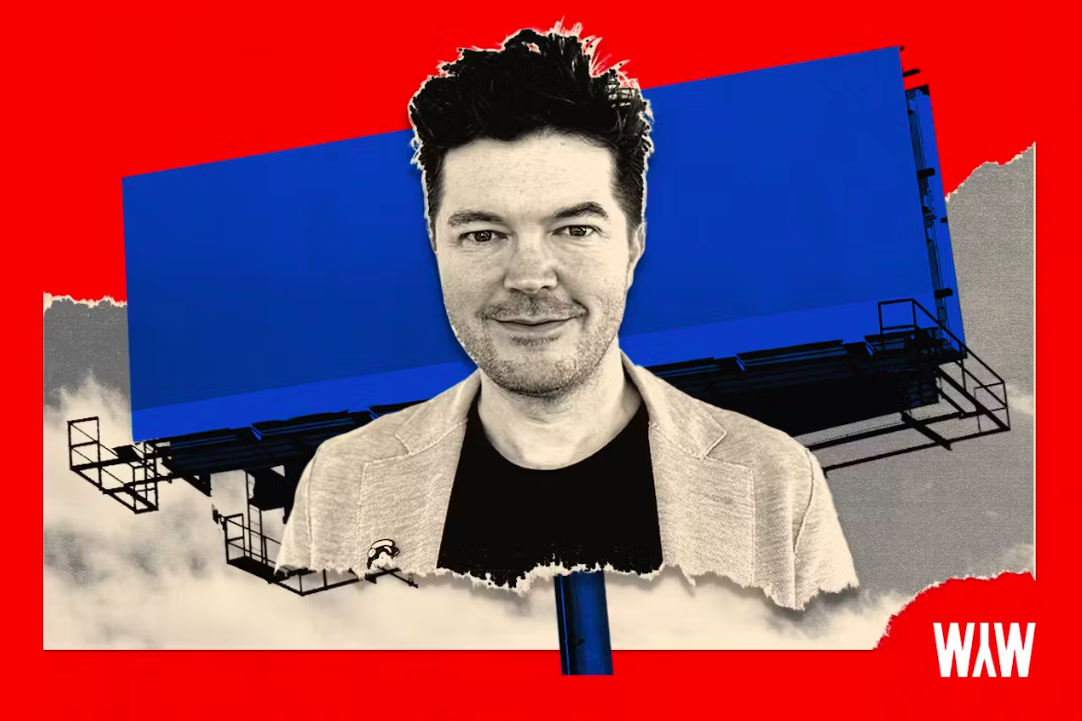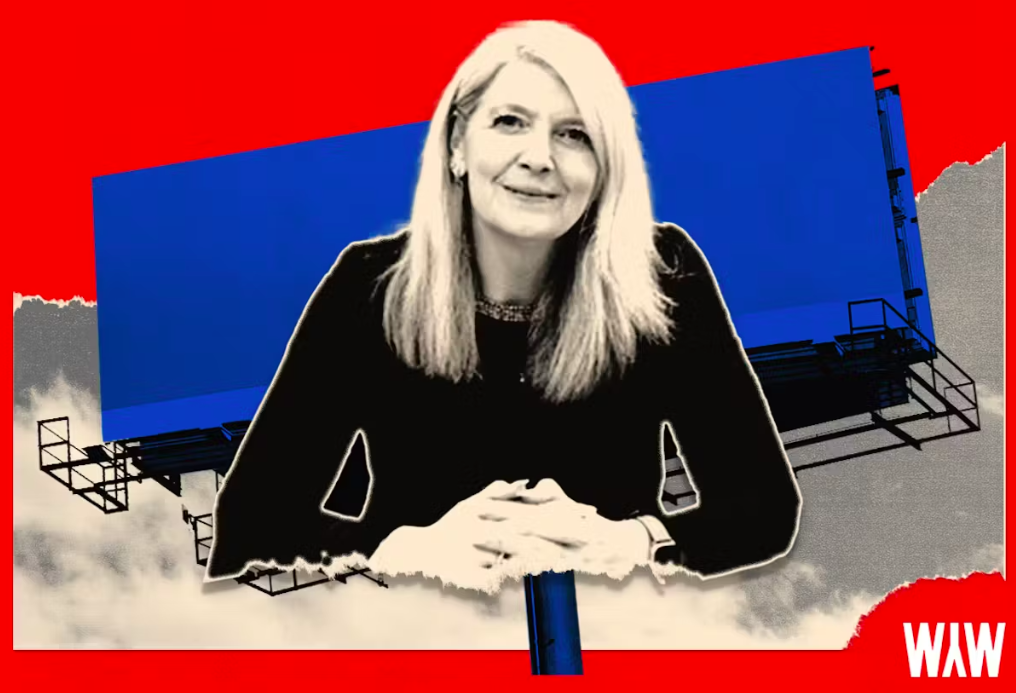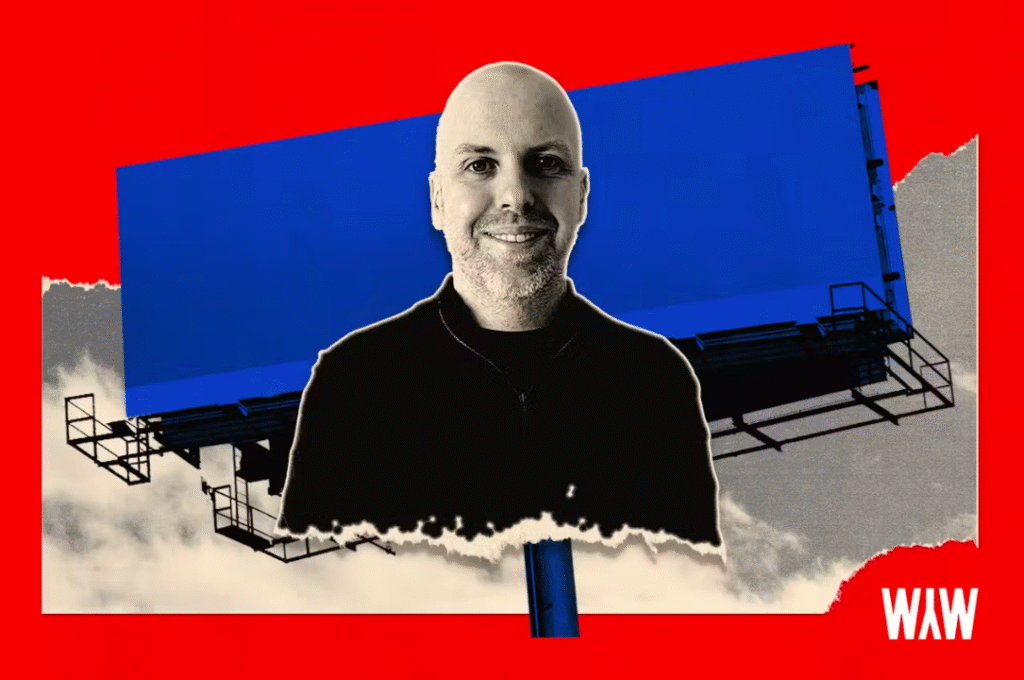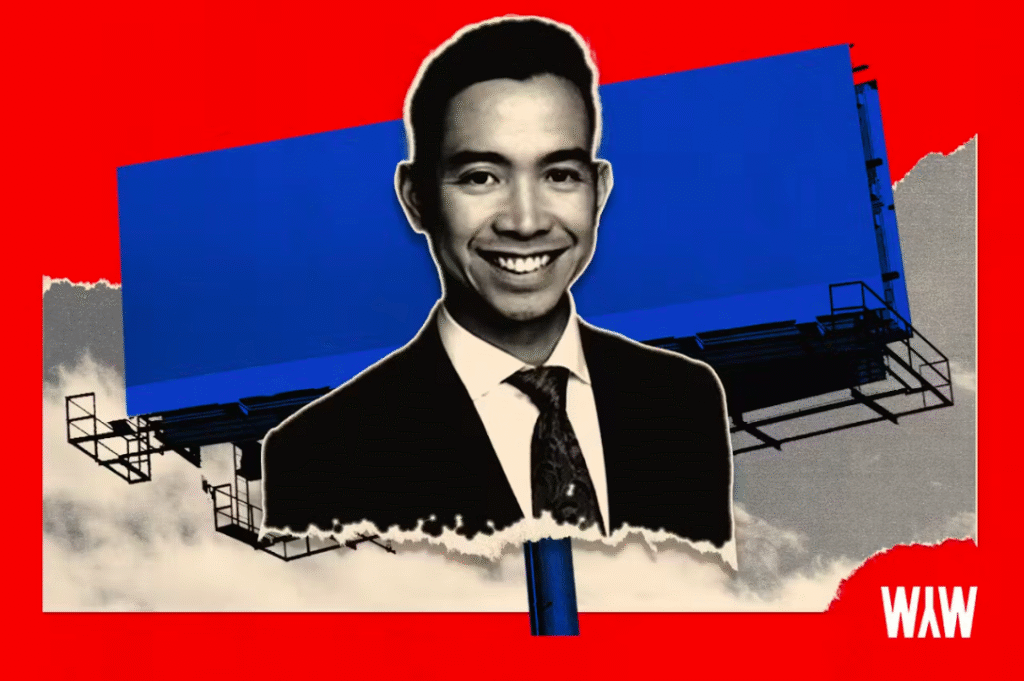Across industries and company sizes, Lodwick says the same question plagues marketers. He tells Tim Healey how he tackles doubt, builds confidence, and keeps teams focused on solving real customer problems.
From brand management at Wrigley to leading Axe at Unilever, and now director of brand experience at Intuit Mailchimp since 2022, can you walk us through your career journey?
Early on, I wasn’t sure what I wanted to do. In my early 20s, I bounced between jobs – working as a server and bartender – before going back to school, where I discovered marketing and brand management.
I began in a sales training program, then moved to a media company and later joined the Wrigley Company, where I was introduced to consumer packaged goods (CPG).
At the time, marketing was still rooted in traditional channels. My experience at Wrigley was a crash course in business management. I went on to work in personal care, learning the foundations of classic brand marketing – driven by deep consumer insights.
I then moved into global roles, leading innovation and brand campaigns, managing local markets and delivering short-term demand.
Three years ago, I had the opportunity to join Mailchimp. I’ve always had a strong interest in tech and understood the growing importance of first-party data. Personally, I’ve been curious about the category for a long time.
Mailchimp felt like the perfect fit. It combined my passion for tech with a brand that truly resonated with me. Their commitment to storytelling and strong brand personality made it a fantastic opportunity, and it continues to be.
Intuit’s head office, USA
What is the offer at Intuit Mailchimp?
Mailchimp is one of four cornerstone brands within Intuit, alongside TurboTax, Credit Karma, and QuickBooks. Both QuickBooks and Mailchimp are focused on serving small and medium-sized businesses.
Mailchimp has a strong legacy of supporting this audience – primarily through email and marketing automation – and it’s always been rooted in technology. Today, AI is accelerating expectations for marketers across the board, whether you’re a small “mom-and-pop” shop or just shy of enterprise scale.
With AI-enhanced email marketing, the standard has become clear: highly personalized messages at scale. My role is to drive demand for Mailchimp – to fuel repeat purchases, organize data effectively and stay ahead by delivering the right message at the right time.
Mailchimp’s product has evolved to meet the growing sophistication and performance needs of our customers. My team plays a crucial role in generating demand by clearly communicating the value we bring – how we solve marketing challenges and improve outcomes. We do this by championing our products and features, while also showcasing who we are as a brand. That combination is our true competitive edge in the market.
Mailchimp’s Revenue Intelligence offer powerful AI and automation tools to help businesses find and win untapped revenue.
Revenue for 2024 was up a staggering 23% at $16.3bn. What’s coming up for you over the next 12 months?
Intuit is a high-growth company, and this year we’re focused on expanding our presence in the mid-market segment. From a business perspective, we see a significant opportunity to serve a larger cohort of customers on a truly global scale.
In many markets, Mailchimp already has a strong foothold with businesses, even where Intuit hasn’t yet fully established itself. That gives us a unique advantage as we grow internationally.
We’re also investing heavily in AI to help customers better manage their data and ensure Mailchimp delivers an exceptional product experience. My team is focused on bringing these innovations to the forefront, showcasing new features and ensuring our messaging clearly communicates the value we’re delivering.
How is your marketing team structured?
My group, the brand experience team, represents roughly half of the marketing organization at Mailchimp. The other half includes teams such as acquisition, web and media, lifecycle and product marketing.
Within brand experience, we have several key functions. Our integrated marketing team drives the overarching strategy and our approach to the funnel. The performance marketing team focuses on lower-funnel execution across markets. We also have a social and influencer team, as well as a thought leadership team, all of which I’d describe as the ‘left brain’ of the operation.
On the ‘right brain’ side, we have our in-house creative agency, Wink. Wink is a full-service team that handles everything from brand strategy to production and operations. It includes writers, motion designers and seasoned creatives with diverse backgrounds.
I lead this multidisciplinary group, ensuring we operate as a cohesive unit. My role is to align everyone – whether the task at hand is deeply creative, design-led, or strategically focused on driving conversions.
Ultimately, we’re here to deliver on the ‘job to be done,’ whatever form that takes.
Mailchimp’s ‘pop up like its hot’ campaign championed its cutsomisable pop-up forms.
Drawing on your leadership expertise, what’s your career taught you that helps to make a great team?
I have a slightly cheesy moniker I use for myself: the person is always greater than the job. There are times when deadlines are tight, and the pressure is on to deliver – but life still happens. Someone might be going through a personal challenge or feeling stuck on a project.
In those moments, taking the time to invest in your team — their development, their well-being, and what truly matters to them — always pays off. It might be harder in the short term, but staying people-first is a philosophy I believe in deeply. The person is always greater than the job.
Equally important is how you build and lead a team in a flat organization. Every idea is welcome, no matter where it comes from. I expect my team to stay curious, to ask questions, to think deeply and to speak up. A flat structure only works if people feel confident and safe enough to contribute.
I encourage my team not just to co-own projects, but to take full ownership of workstreams. When you take a people-centric approach, everyone becomes accountable for our collective success and everyone has a seat at the table.
Do you have any advice on how to ensure that within marketing teams, people aren’t operating in silos?
I believe it’s incumbent upon leaders, myself and my direct reports, to stay actively aware and make this a top priority. You have to ask yourself: does this person understand what’s happening elsewhere in the organization? And if they don’t have that context, how can we expect them to deliver their best work?
I always keep a mental Post-it note that reads: How aware is this group of what’s going on outside their own lane? To help bridge those gaps, we host quarterly forums. These sessions are showcases, open to anyone, not just those on my team.
People are invited to share what they’re working on, whether it’s a polished piece or something still in progress that they’re excited about. Sometimes, they even share personal projects completely outside of work. That kind of openness builds human connection and strengthens our culture.
Creating a space for regular sharing fosters deeper collaboration, and I see that as a vital part of my role, as the conductor bringing it all together.
Mailchimp’s annual ‘From Here To There’ conference in London showcases leading thinkers in marketing.
What are the pros and cons of AI in marketing?
We’d better focus on the positives, because we’re not putting the AI genie back in the bottle. Right now, we’re still finding our way with AI. A year ago, some aspects felt puzzling; today, we’re actively implementing them.
Some AI innovations will prove hugely valuable. Others may turn out to be noise, and some will fall into the “we tried it, it didn’t work” category. That’s part of the process.
If AI can expand our capacity, personalize the customer experience and make our lives easier, I’m all in. But if the value isn’t clear, we don’t need to force it. What’s essential is adopting a mindset of experimentation. Can we pilot this new gen-AI tool? Can it create work we’re proud of and confident putting out into the world?
Our customers are on this journey too. At Mailchimp, it’s our responsibility to clearly explain how these AI capabilities, at their core, are simply smarter ways of organizing data and solving problems. If we communicate that well, we’ve done our job. If we don’t, it just becomes noise.
Some of the long-term potential of AI is astonishing, and certain innovations are arriving faster than expected. In our creative studio, Wink, we’re already using AI to accelerate concepting, delivering high-quality ideas to leadership that would’ve taken much longer to produce manually.
Tell us about a customer research discovery that you made that you found surprising?
We launched The Clustomer Campaign based on insights gathered from countless customer touchpoints, where we kept hearing the same recurring theme. Initially, we assumed this challenge was specific to small businesses or solopreneurs, but we were wrong.
What we uncovered was universal: regardless of company size, industry, resources, or role within a marketing organization, nearly everyone was asking the same fundamental question: “How do I know if I’m doing the right things?”
Marketers repeatedly shared that they were struggling with audience segmentation: how to do it effectively, and once segmented, how to apply the data. Despite having access to vast amounts of information, many felt overwhelmed and unsure of how to move forward.
That shared struggle inspired The Clustomer. By visually representing customer types tangled in a chaotic ball, we brought the problem to life in a way that resonated deeply and sparked breakthrough memorability.
The campaign not only started important conversations among marketers but also positioned Mailchimp as the solution, helping users cut through complexity, unlock clarity and make more confident, data-driven decisions.
What myth about marketing would you most like to bust?
The only clear path to marketing success is by solving real consumer problems. The moment you stray from that focus, you’re headed for trouble. There’s a lot of ‘fear of missing out’ in marketing, especially when observing what other brands are doing.
But when you strip it all back and ask, Why are we here? What are we really doing? The answer is simple: we’re here to drive demand for a product, service or brand. That’s our job. And the best way to do that is by serving our customers. Every customer has a problem, so the key question becomes: what can we do that uniquely solves it?
There’s so much noise out there, so many shiny new things competing for our attention. Yet, the work we admire most is often incredibly simple. And that simplicity is usually the result of distilling a complex problem into something clear and resonant. When we see it, we recognize it instantly.
At its core, if you adopt a service mindset and channel your energy into genuinely helping your customers, you can’t go wrong.
Mailchimp’s ‘Email is Dead’ immersive experience was designed to prompt wider conversations about the future of communication and attempts to capture a 360-view of the feelings and sensations that email evokes.
What advice might you give your younger self if you could go back in time?
Well, I like this guy. He’s a good guy. I would want to give him three pieces of advice. One: be patient. Careers are long. You’re in control of some of it but not all of it, so be patient. It will all work out.
Two: I would say, take risks early. Nine times out of 10, what may have first appeared like a challenge will end up opening doors.
Three: invest in relationships. That’s advice I have for anybody today. So, if you’re listening, Younger Mark, invest in relationships. It’s always going to yield great results for you.
Could you tell us something that maybe not a lot of people know about you?
I am secretly an introvert. If you asked 100 people that know me, they would most likely say: “Mark’s such an extrovert.” But in truth, I really value my own time: time spent at home, regrouping, thinking and sometimes doing nothing at all.
Mailchimp’s ’Clustomer’ campaign highlighted a surplus of customer data – and how to make best use of it.
Do you think marketing will still be a career in 10 years’ time?
Absolutely. I believe marketing is one of the few professions we can confidently say will remain essential in the future. It is a natural extension of selling, and as long as we’re in the business of generating revenue, there will always be something to sell. Businesses will continue to pursue growth and with today’s tools, we can now market across geographies more effectively than ever before.
I don’t anticipate a time when generating demand for a brand or business will become irrelevant. It’s also hard to imagine this responsibility being fully outsourced to machines. While technology will continue to advance, marketers will still be needed to guide and orchestrate its use, much like conductors leading an orchestra. The demand for creativity in how we market ourselves, our businesses and our brands will always remain strong.
What question would you like me to ask the next senior marketer that I’m interviewing?
Ask them about a time in their career when they regretted not taking a risk.
Your question from the last senior marker I spoke to is this: if you had a magic wand, how would you solve the cross-platform measurement challenge?
I would wave that wand, and I would clone that person that asked the question and have them report to me. I would then set them the task of solving that question.
If there’s one thing you know about marketing, it is…
Focus on solving consumer problems, and you can’t go wrong.
You might die tomorrow so make it worth your while. Worth Your While is an independent creative agency helping brands do spectacular stuff people like to talk about. wyw.agency.
This interview has already appeared in The Drum. Discover the best campaigns, industry insights and interviews from world-leading marketers, creatives and more.









